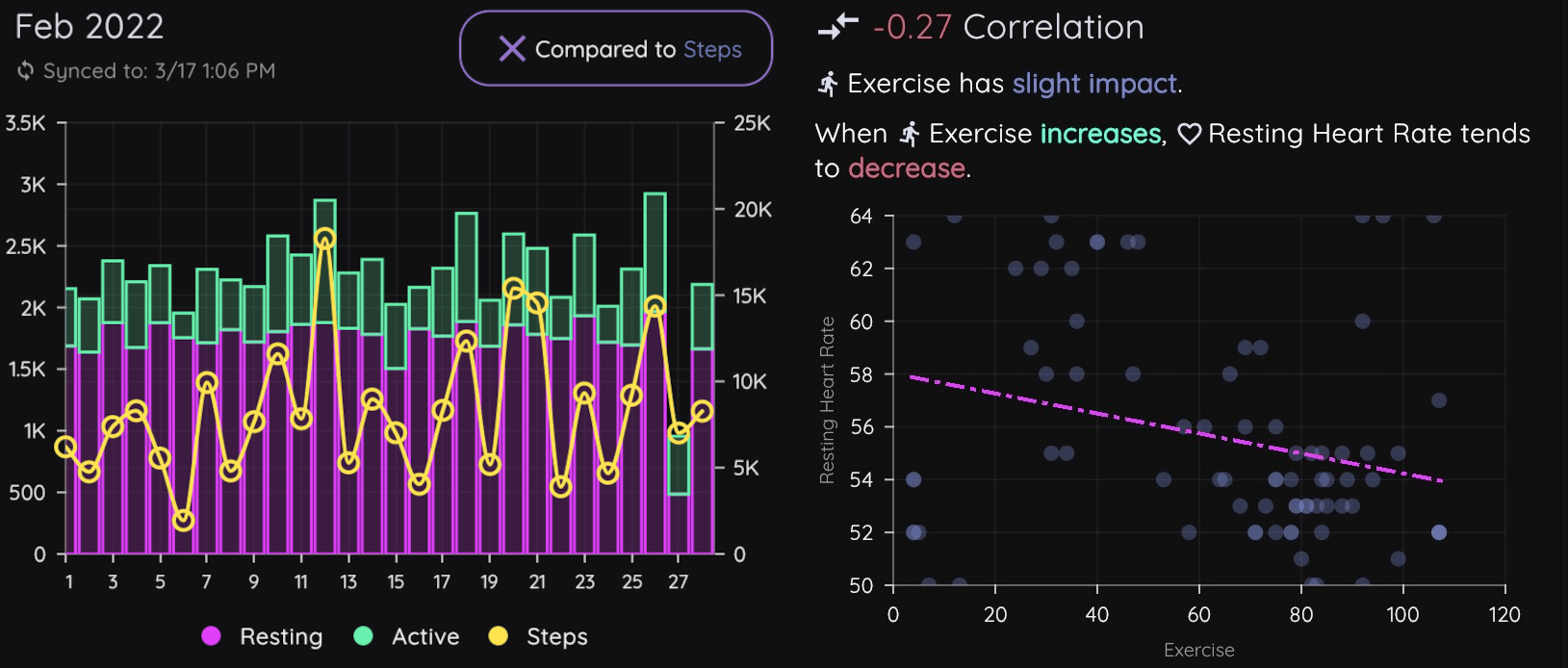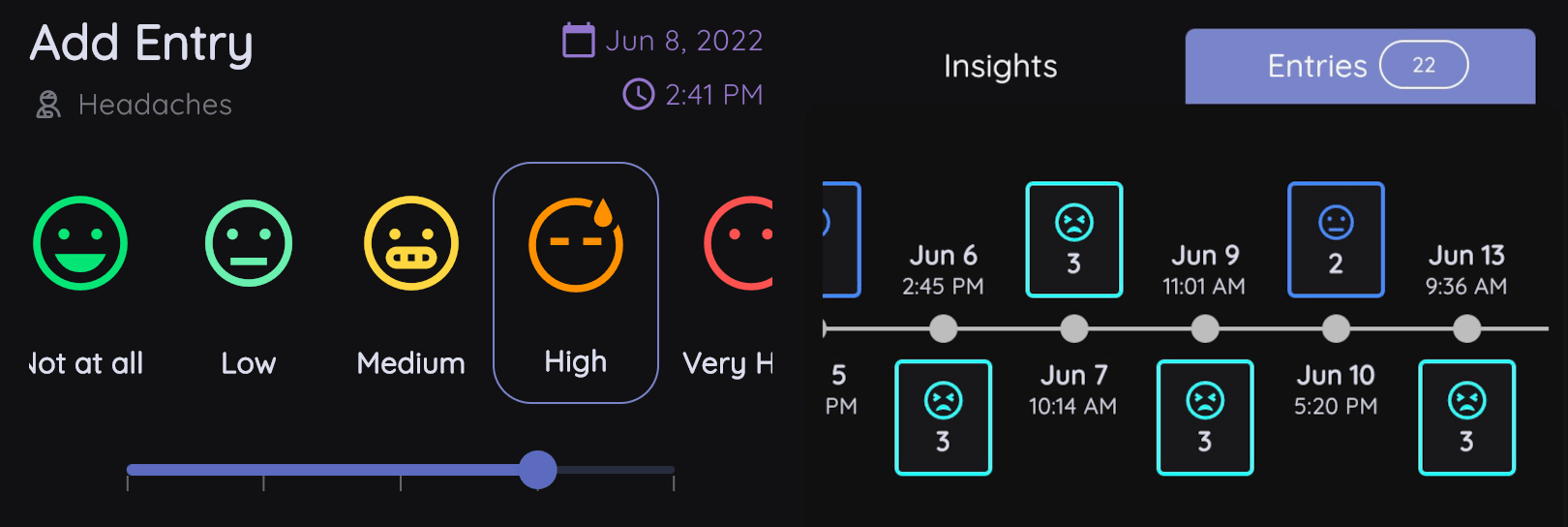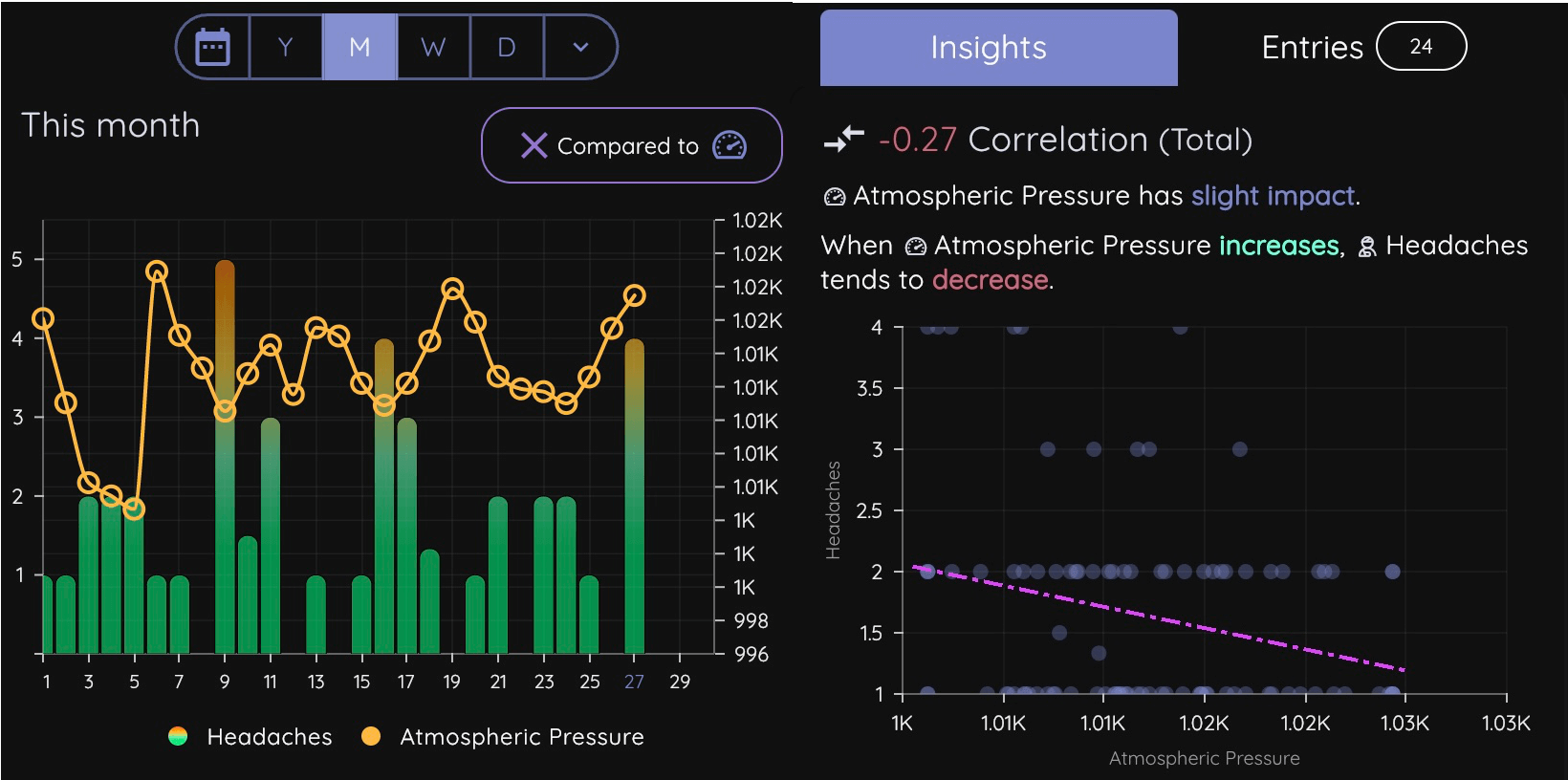What Causes Migraines? Tracking Symptoms To Discover Correlations

The migraine is one of the most common neurological diseases in the world today, affecting over 35 million Americans and around 1 billion people worldwide. In the United States alone, approximately one in four households have someone who experiences migraines. Women are also three to four times more likely to experience migraine symptoms than men.
The Mystery of the Migraine
Ever since I was a kid, I remember migraines being a part of my everyday life. There was always a clear difference between a migraine and a headache for me, as the former would often lead to a complete shutdown of my day: nausea, dizziness, and feeling like my head was going to explode. Several years ago, I remember attending a wedding a few hours outside of the city and on the long drive home, a headache began to come on and before I knew it, it had turned into a fully fledged migraine. I remember my father having to stop the car as it took over control of my entire body at one point, causing me to feel extremely nauseous as well as perturbing my vision with artifacts and visual disturbances. We stopped by a gas station to pick up some migraine medication, and I layed down in the back seat, doors open, with a shirt over my eyes until the pain had subsided.
Ever since then, I have been experiencing migraines regularly, as frequent as one every month or two. Having made diet and exercise a more central part of my life, I have noticed that the frequency of migraines and the level of acute pain has dropped overall. I still do experience them from time to time, but they remain a mystery as to when, why and what triggers were involved in their onset.
Ironically, I’ve been in the midst of one while writing this article.
Looking for Solutions
One of the biggest inspirations for building Metriport, which we started in later 2021, was to create a tool that would help us spot patterns and correlations in our lives. The mystery of my migraines were enough to motivate me to build such a tool. One that could offer some insight into why they were happening in the first place. For the launch of our MVP, we baked in a basic correlation comparison feature that would run basic linear regressions on any two selected metrics being compared.
 Metriport’s correlation comparison feature.
Metriport’s correlation comparison feature.
Right off the bat, this correlation comparison feature seemed to offer some compelling insights. Before logging any headache data, I was able to sync with Apple Health and import data from my Apple Watch. On my first comparison, I learned that the more my steps increased, the more I would sleep on average. This taught me that if I could focus on getting more steps in each day, I could probably expect to get a better sleep. Obvious right? The possibility of using this same feature to discover more about my migraines made me excited to start logging my symptoms…
Tracking Symptoms
The first step in getting insights into one’s data is creating the data in the first place. We knew we wanted to make logging entries for manually tracked metrics as hassle-free as possible when designing Metriport, as no one wants to sit for hours and do Excel-style spreadsheet entries for tracking multiple things. To get setup with what I needed to track migraine symptoms and eventually get insights, it was as simple as doing the following:
• Selecting a headache tracker from Metriport’s recommended templates.
• Creating other trackers for things that I thought could be possible triggers to the migraines: Gluten Intake, Stress, and other automatically tracked metrics such as Sleep and Exercise from my Apple Watch.
• Completing daily entries for the manually-tracked metrics I created, with simple 1-5 level selections.
 Metriport’s entries slider (left) and entries timeline (right).
Metriport’s entries slider (left) and entries timeline (right).
After the first few weeks of tracking, I was able to begin getting correlation insights into my metrics. I compared my headaches with my exercise minutes, stress levels, gluten intake, and even water intake. There would often be slight correlations between these things, but nothing that stood out as a clear “aha” moment. It seemed like I was on the right track with tracking my migraine symptoms, but still didn’t have the right insights I needed to begin understanding what was causing them. There seemed to be a missing data source…
Weather Data: The Missing Link?
In February, we unveiled a really exciting new update to Metriport: Weather Integration. Now we could track things such as:
• Temperature
• Atmospheric Pressure
• Humidity
• Dew Point
• UV Index
• Cloudiness
• Precipitation
The ability to sync with Open Weather’s API meant that I could now automatically track weather metrics and discover correlations between these data points with my migraine symptoms, as well as anything else I was tracking.
Lifting the Veil: Atmospheric Pressure vs Migraines
The best thing about our Open Weather update was the fact that I could now begin to answer some of the questions I had for a long time: are my migraines influenced by atmospheric pressure? To see, I continued tracking my headaches by severity and kept my atmospheric pressure tracker going for over a month. After some time, I now had the ability to see how big of an impact atmospheric pressure had.
Without too much surprise, I discovered through Metriport’s correlation insights that my headaches were indeed impacted by drops in atmospheric pressure: “When Atmospheric Pressure increases, Headaches tend to decrease”. What was interesting though, was that for the time being, Atmospheric Pressure only had a slight impact on headaches. I was hoping to find a clear strong correlation, so I could pinpoint what single factor was influencing them the most. Now I realized that perhaps there is no one single factor that causes them, but rather a combination of factors. For the time being, there was still some mystery in the pursuit of the question I’ve been asking myself for so long: what causes migraines?
 Atmospheric pressure vs headache data comparison in Metriport.
Atmospheric pressure vs headache data comparison in Metriport.
As the Metriport platform evolves, I believe we will be one step closer to giving comprehensive analyses to any health metrics our customers desire, including the source of truth for migraines. With an increase in data fidelity and granularity, as well as an increase in breadth of supported devices and technologies, one day we may even be able to directly diagnose the exact mental pathways that are triggered and compare them to other metrics like weather, blood data, general fitness, subjective mental wellness and more. The sky’s the limit with Metriport, which you can get started with on iOS and Android today.